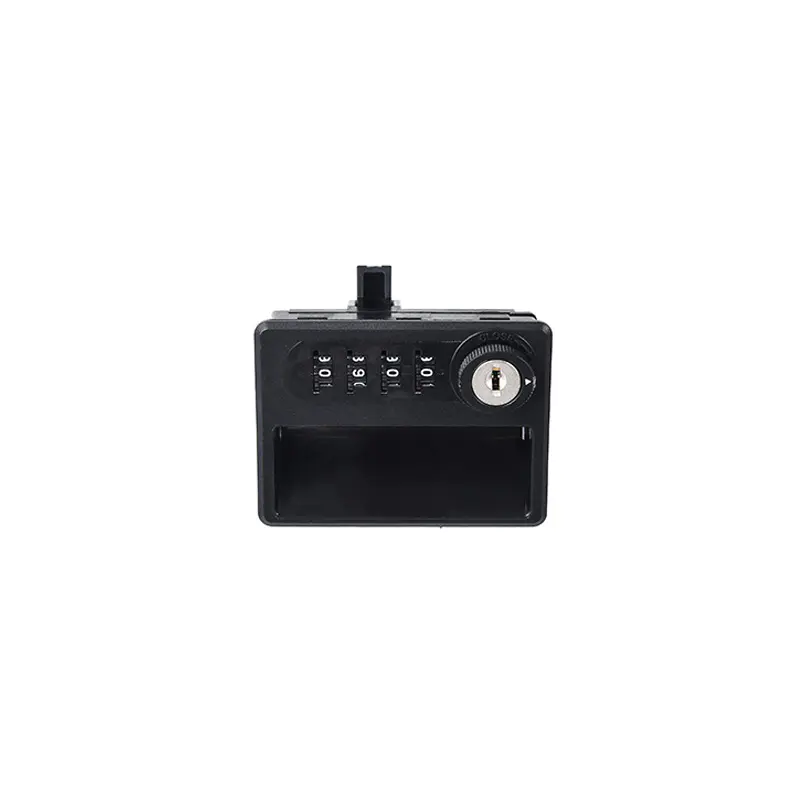The resistance of combination cabinet locks to picking and tampering can vary depending on the type and quality of the lock. Here's a breakdown of their resistance and measures to enhance security:
1.Mechanical Locks:
Mechanical combination cabinet locks offer a basic level of security but may be vulnerable to picking by skilled individuals. Their resistance depends on the complexity of the lock's internal mechanism.
To enhance security, consider locks with a higher number of combination digits, which exponentially increases possible combinations and makes it more difficult to guess. For instance, a 6-digit combination is significantly more secure than a 4-digit one.
Regularly change the combination, especially when personnel changes occur or if there is any suspicion of unauthorized access.
Choose locks equipped with anti-tamper features, such as built-in alarms or relockers, which trigger if tampering is detected, rendering the lock temporarily or permanently inoperable.
2.Electronic Locks:
Electronic combination cabinet locks are inherently more resistant to picking due to their digital nature. They rely on electronic algorithms and user authentication.
Enhance security by selecting electronic locks with robust encryption and authentication methods. Ensure they meet industry standards for data security.
Keep firmware or software up-to-date to patch any potential vulnerabilities that could be exploited by hackers.
Implement access logs and audit trails to monitor and record access attempts. These logs can assist in identifying and responding to suspicious activity.
3.Biometric Locks:
Biometric locks, which use unique physical characteristics like fingerprints, are highly resistant to picking. However, they can be susceptible to spoofing attacks if not properly designed.
Enhance security by choosing biometric locks from reputable manufacturers with proven anti-spoofing technologies, such as liveness detection.
Ensure that biometric data is securely stored and encrypted to prevent unauthorized access or data breaches.
Implement multi-factor authentication by combining biometric locks with PINs or smartcards for an added layer of security.
4.Key Override:
Some combination locks may have a key override feature for emergency access. While this can be a valuable backup, it should be managed carefully to prevent vulnerabilities.
Keep key overrides securely stored and limit access to authorized personnel only.
Develop and enforce strict key management policies, including key issuance, retrieval, and auditing.
5.Regular Maintenance:
Mechanical locks require regular maintenance to ensure they continue functioning correctly. Over time, wear and tear can make them more susceptible to picking.
Lubricate mechanical locks according to the manufacturer's recommendations to prevent internal components from seizing or becoming more accessible to tampering.
6.Security Audits:
Periodic security audits can help assess the resistance of combination locks to picking and tampering.
Engage professional security consultants to conduct penetration testing and evaluate the effectiveness of your security measures, including locks.
7.Employee Training:
Employee awareness and training are essential components of security.
Educate employees about the significance of security, the correct usage of combination locks, and the risks associated with sharing combinations or allowing unauthorized individuals to observe the unlocking process.
8.Multi-Layered Security:
Combining combination cabinet locks with other security measures forms a robust defense against tampering and unauthorized access.
Implement surveillance cameras, access control systems, and intrusion alarms to deter and detect tampering attempts.
Ensure that these security components are integrated effectively to provide a cohesive security infrastructure.


Material: Zinc alloy lock case, lock cylinder, carbon steel lock plate, engineering plastics.
Surface treatment: The lock shell is passivated, the lock cylinder is nickel-plated, the lock plate is colored zinc, and the plastic shell is black by default (it can be made according to customer requirements).


 English
English 中文简体
中文简体
















